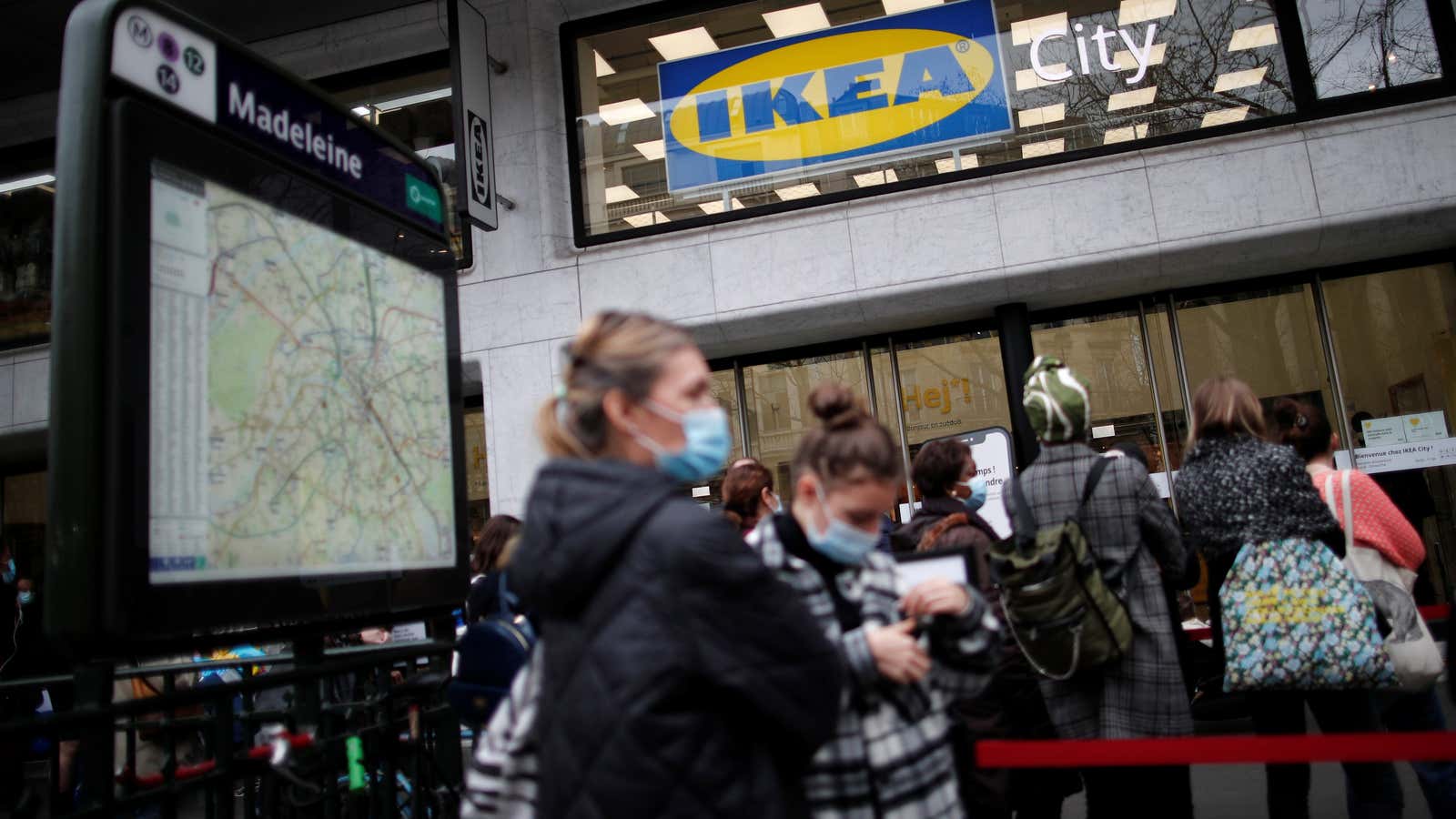The Swedish furniture giant IKEA is often associated with large, hulking warehouses located well outside city centers. There’s the store outside of central Seoul, which is nearly as big as the Louvre, or the Kungens Kurva location, in a suburb of Stockholm, which has enough parking spots for 1,850 cars.
But in recent years the retailer has started to experiment with urban locations that are easily accessible by public transportation in cities such as Tokyo, Paris, and New York. The chain announced today (Oct. 26) it would expand its urban footprint in central London by opening a branch in the former Topshop flagship store on Oxford Street, built a century ago, and located in the heart of London’s main shopping district. IKEA paid £378 million ($520 million) for retail space in the iconic seven-story building, and plans to occupy three of its floors by fall of 2023.
Store is a response to shifting consumer behaviors
Peter Jelkeby, the country retail manager and chief sustainability officer for IKEA UK and Ireland, said the decision to open a central London location was in part a response to shifting consumer behaviors and changes to the retail industry as a whole. “Big global movements in technology, demographics, urbanization, and environmental awareness have caused significant waves of change in the way we live and shop,” Jelkeby said in a statement, adding that the new store would help the retailer become “more accessible.
E-commerce had already been growing prior to the coronavirus pandemic but lockdowns accelerated this trend, at the expense of physical retailers that were slow to develop an online presence. One of the pandemic’s casualties was the previous occupant of the grand new Ikea space: Topshop filed for bankruptcy in November 2020, and was acquired by the online retailer ASOS this February.
IKEA’s UK operations took a financial hit last year after closing their physical storefronts for nearly three months, and at least one of their suburban London locations, located in the southeast town of Bromley, didn’t survive. But despite the rapid acceleration of online shopping, Jelkeby said he still sees physical storefronts as an “essential part of the IKEA experience.”
IKEA has been experimenting with city locations for several years
The furniture retailer has been trying to reduce its dependence on out-of-town warehouses since at least 2019, when it opened smaller stores in Paris and Moscow with some success. The La Madeleine shop, located not far from the Champs-Elysée, did sales that were just below the levels of a warehouse five times its size during the first five months it opened, according to The Financial Times. That same year IKEA opened a location in New York’s Upper East Side, and this January the company opened another smaller-format store in Queens.
INGKA, which owns IKEA locations, has identified five different store formats it’s currently experimenting with:
- Smaller format: Similar design to regular IKEA locations, but smaller and easily accessible by public transportation (Paris, Moscow).
- IKEA shop: Centrally located, with a specific range of products (Madrid).
- Planning studio: Offers consultations with design specialists, as well as assembly and installation services (Copenhagen, London, New York City, Moscow, Stockholm).
- Pick-up point: For online orders.
- Pop-up: Open for a limited time, highlighting a certain theme (plans for a secondhand IKEA pop-up store in Eskilstuna, Sweden were recently announced).
The investment company has touted smaller IKEA operations as a way to promote sustainability, and also revealed plans for a car-free store in Vienna in January.
